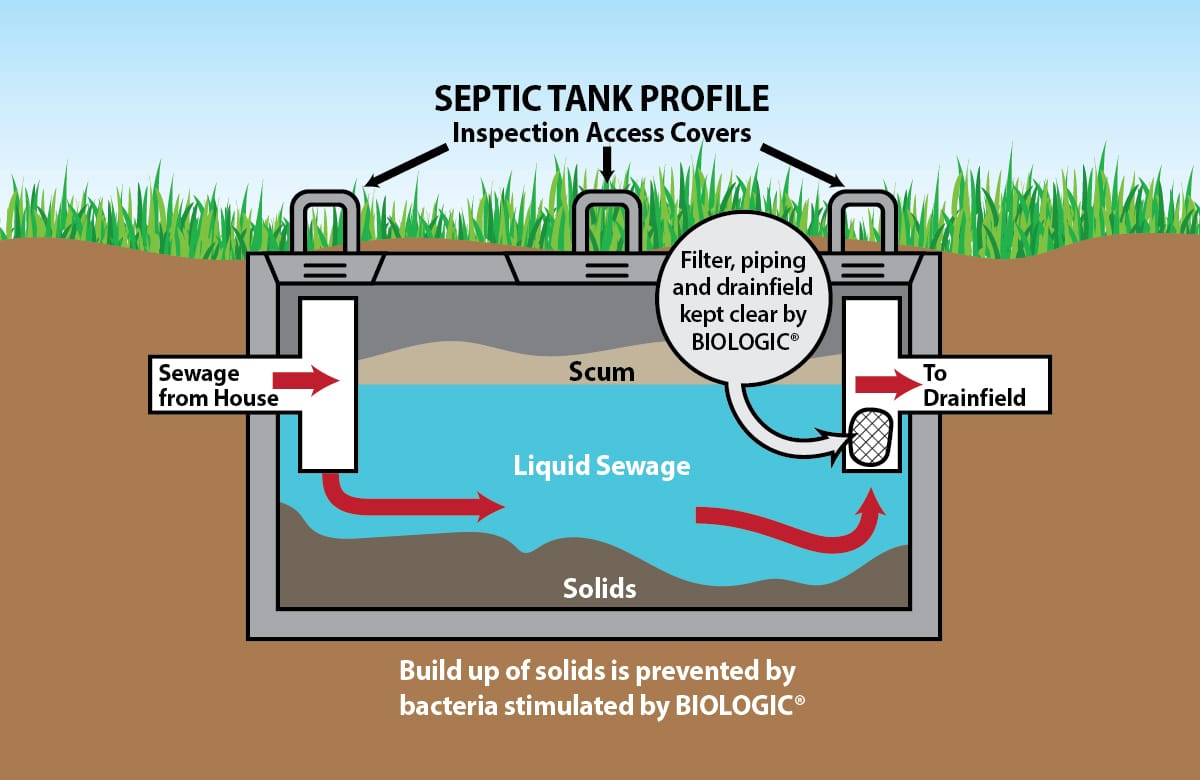There is no need to kill the bacteria and you shouldn't anyway, especially if dumping into an on-site septic disposal system, which need the bacteria for digestion in an in-ground holding tanks. Dumping formaldehyde into a septic system can cause it to fail.
As above, effluent has aerobic (oxygen "loving") and anaerobic (oxygen "hating") bacteria in it. The aerobic bacteria begins the effluent digestion quickly whereas the anaerobic bacteria takes weeks. It's the anaerobic bacteria that creates the smelly rotten egg odor, not the aerobic bacteria which creates a faint musky smell.
A traditional sewage holding tank looks like in the photo. Heavy solids sink to the bottom where anaerobic bacteria live and scum floats to the top where the aerobic bacteria live. The majority of digestion occurs in the scum layer. Newer "technology" pumps oxygen into the effluent in a holding tank (residential) and mixes it into the solids up for more efficient and faster digestion by aerobic bacteria.
An RV holding tank is simply waaay too small to allow for solids sinking to the bottom and a floating scum layer plus the solids are normally never in there long enough for anaerobic bacteria to create the smelly odors.
I challenge anyone to find an engineer or other professional in the field of sewage disposal system design or gov't agency that would say you should kill bacteria in any holding tank. The State of California for example, outlines why not to use formaldehyde in RV holding tanks
here.
Plenty of water is the answer for RV holding tanks. Works great for us. If you're getting bad odors, it could be a sign that you're not adequately flushing your tank and "stuff" is getting left behind. But then, some folks freak out by the slightest whiff of a tank odor no matter what.

